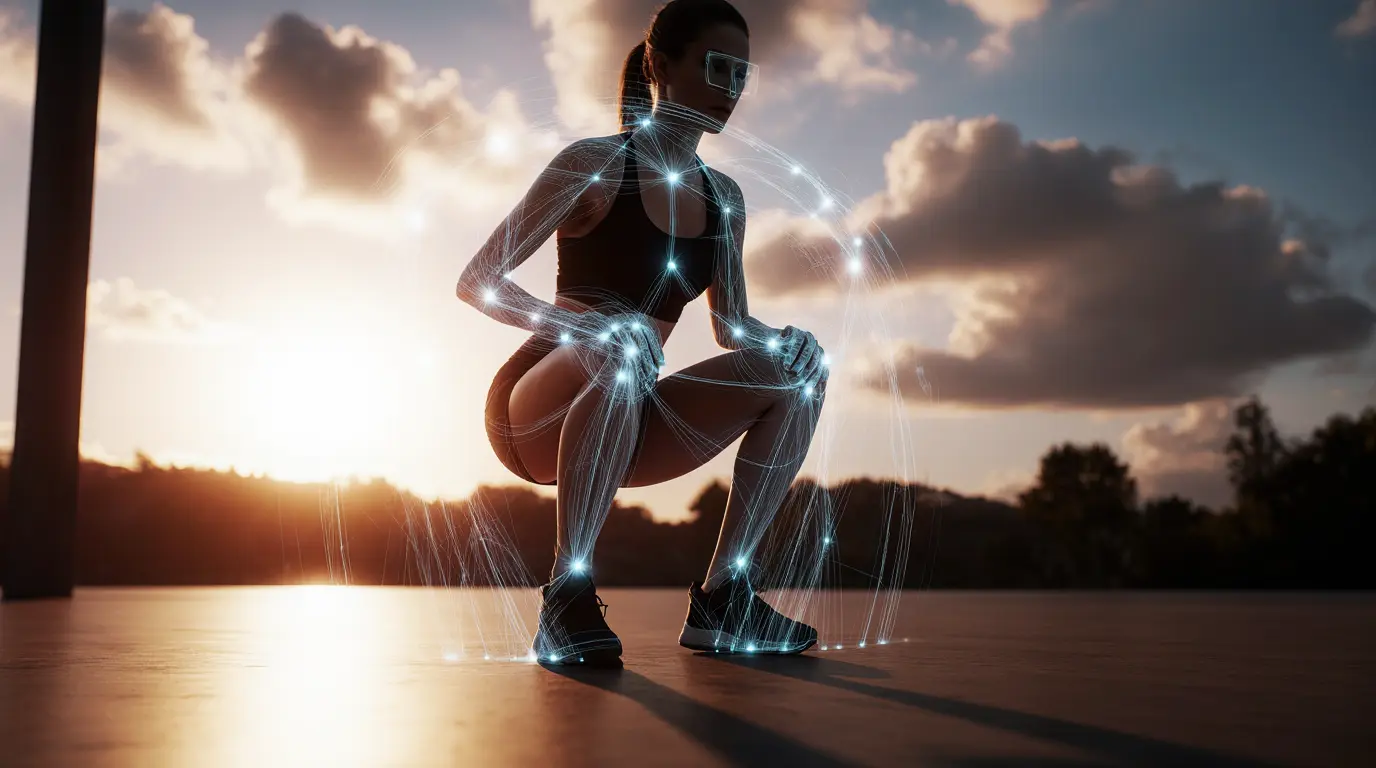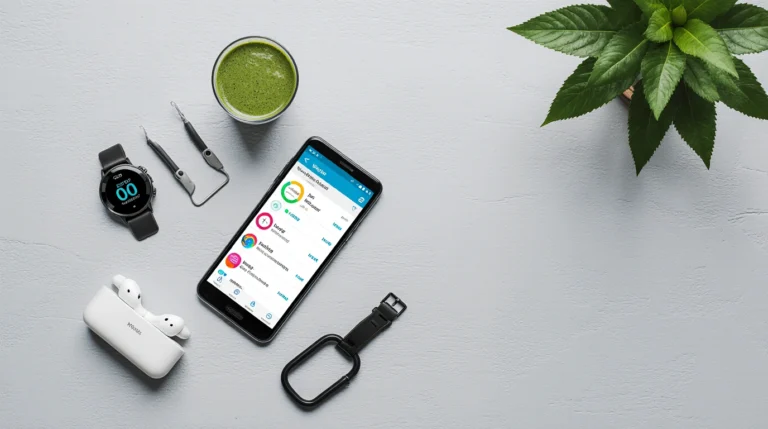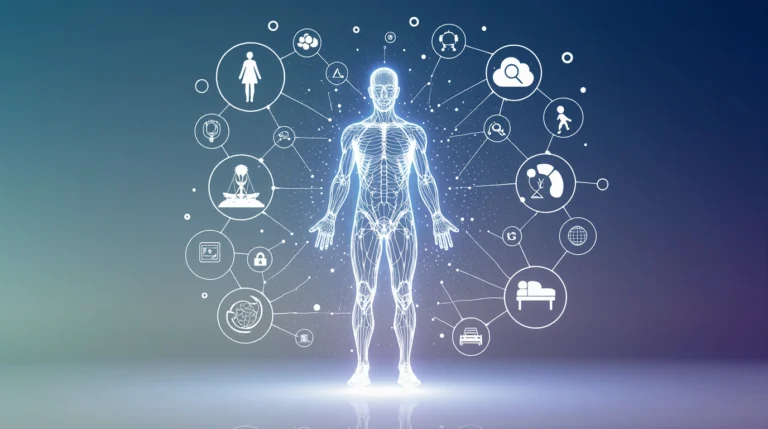The Ultimate Guide to AI for Injury Prevention in 2025 (Train Smarter)
The Silent Risk in Every Workout: Poor Form
Did you know that millions of fitness-related injuries occur each year, with a vast majority stemming not from a lack of effort, but from improper exercise form? For years, the only way to get reliable feedback was to hire an expensive personal trainer. But what if your phone could become that expert eye? Today, the use of AI for injury prevention is no longer science fiction; it’s a practical tool that can analyze your every move.
The AI Revolution in Fitness: More Than Just Counting Reps
Modern fitness technology is moving beyond simple step counters. The new wave of AI tools acts as a personal AI fitness coach, focused on the quality of your movement, not just the quantity.
How AI “Sees” Your Movement: An Introduction to Computer Vision
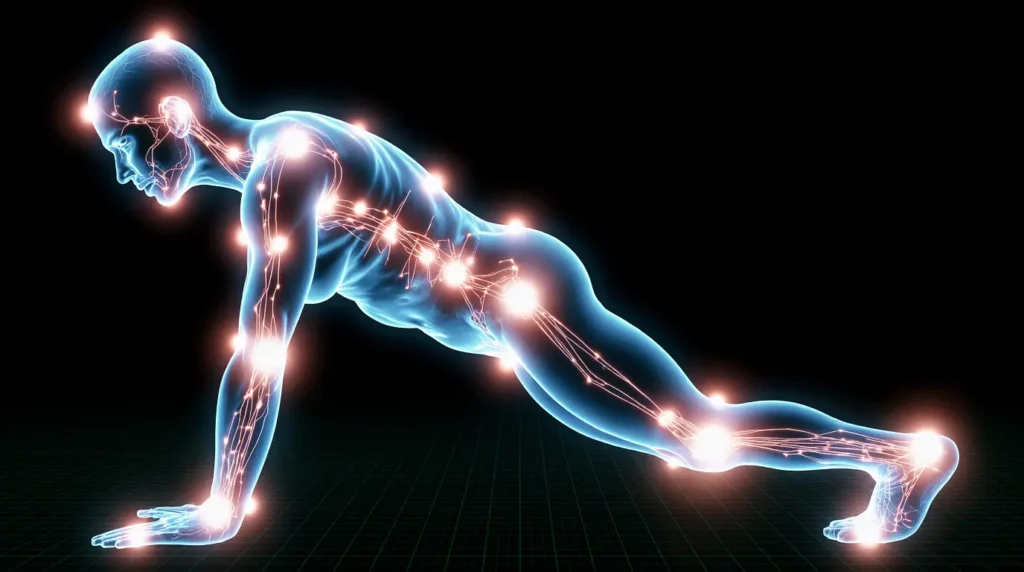
So, how does an exercise form correction app actually work? It uses a technology called “computer vision.” Your phone’s camera captures your workout, and the AI algorithm identifies key points on your body (your joints, limbs, etc.). It then tracks the angles, speed, and trajectory of these points throughout the movement, comparing them to a database of correct form for that specific exercise.
From Data to Correction: The Power of Real-Time Feedback
The most incredible part is the real-time feedback.While you’re doing a squat, the AI tracks your form — flagging issues like shallow depth or knees collapsing inward. It can then provide instant auditory or visual cues, like “Keep your knees out!” or “Lower your hips.” This immediate correction is the key to building good habits and is fundamental to using AI for injury prevention.
How to Use an AI Fitness Coach to Improve Your Form
Here’s a practical, step-by-step guide to using this technology.
Step 1: Choosing the Right Exercise Form Correction App
Your first step is to find an application that specializes in form analysis. Search the app store for terms like “AI fitness coach” or “exercise form correction.” Look for apps that have a large library of exercises and positive reviews regarding the accuracy of their feedback. Many apps offer a free trial, which is a great way to test them out.
Step 2: Setting Up Your Camera for Optimal Analysis
This is a critical step. The AI can only analyze what it can see. Place your phone on a stable surface (a tripod is ideal) where your entire body is visible in the frame from the side or a 45-degree angle. Ensure the lighting is good and you’re not wearing overly baggy clothes that obscure your joints.
Step 3: Performing the Exercise and Receiving Feedback
Select the exercise you want to perform (e.g., a push-up). Open the app, start your workout, and just follow the guidance on screen. As you perform your reps, pay close attention to the real-time feedback. The app might show colored lines over your body, highlight areas of concern, or provide voice cues.
Step 4: Understanding the Corrections and Applying Them
After your set, the app will likely provide a summary of your performance, showing your accuracy score and your most common mistakes. Take a moment to understand this feedback. The goal isn’t just to get a high score, but to comprehend why a certain movement was incorrect. Use this knowledge in your next set.
A Practical Example: Analyzing My Squat Form with AI
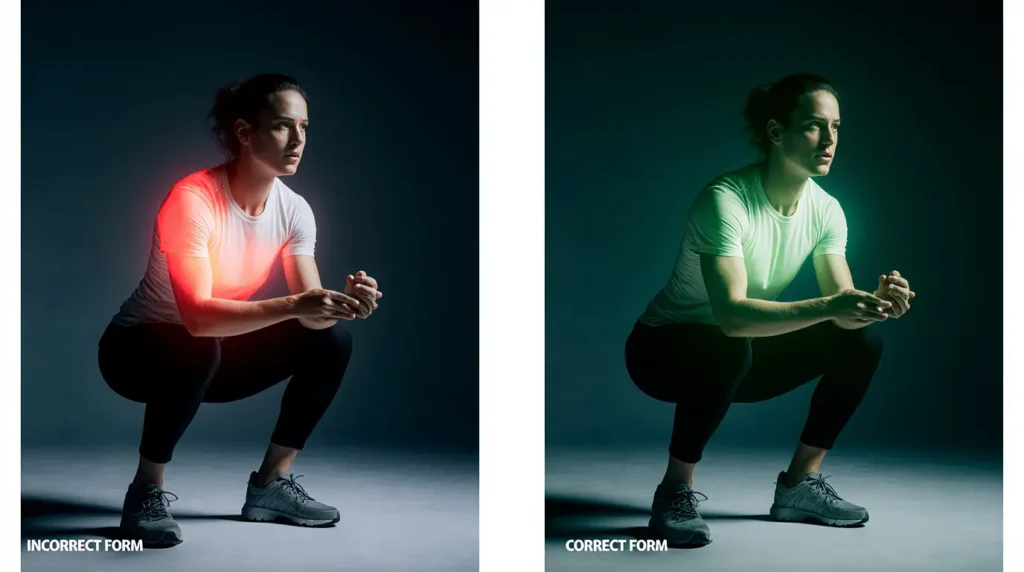
I used an exercise form correction app to analyze my squat. I thought my form was decent, but the AI immediately flagged two issues: my chest was dropping forward on the way up, and my weight was shifting too much to my toes. It provided a simple cue: “Keep your chest up and push through your heels.” After applying this feedback, my next set felt more stable and powerful. That moment confirmed for me how effective AI can be in preventing injuries.
Common Mistakes to Avoid When Using AI for Injury Prevention
Mistake 1:
Relying on AI for Pain Diagnosis An AI fitness coach can correct your form, but it is not a doctor. If you feel sharp or persistent pain during an exercise, stop immediately. Do not rely on the app to tell you if you’re injured. Consult a medical professional.
Mistake 2:
Ignoring the Importance of Warm-Ups and Cool-Downs AI can perfect your form during the main workout, but it can’t prevent injuries if your muscles are cold and unprepared. Begin with a solid warm-up and finish with a stretching routine — it’s essential for performance and recovery.
Frequently Asked Questions
How accurate is AI in detecting incorrect exercise form?
The accuracy is surprisingly high and constantly improving. For common exercises like squats, lunges, and push-ups, the best apps are very reliable. However, for more complex or unusual movements, there can still be limitations.
Are these AI fitness coaches expensive?
Many apps operate on a subscription model, often much cheaper than a single session with a human trainer. Most offer free trials, so you can test their effectiveness before committing.
Can AI replace a human personal trainer?
Not entirely. AI provides excellent, data-driven feedback on form, but a human trainer offers motivation, personalized program design based on your life context, and accountability. The best approach is to see AI as a powerful tool to supplement your training, especially for workouts you do on your own.

